







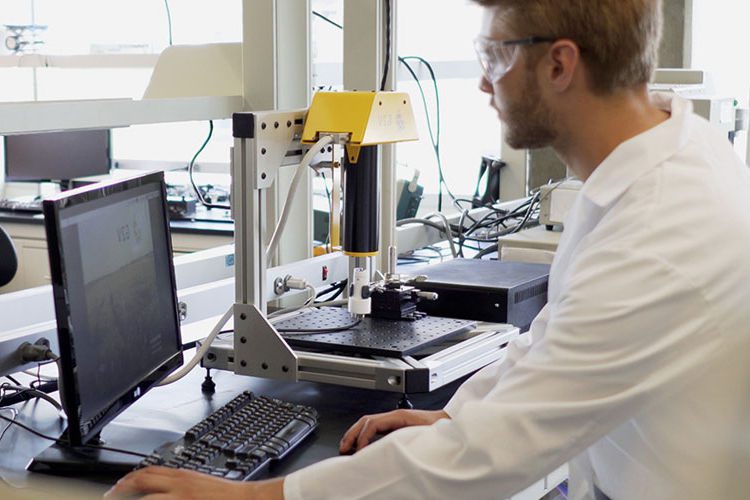
Engineered sunlight in the comfort of the lab any time, every time
Scientific research requires the most precise and reliable instruments to probe natural phenomena. A solar simulator enables exploration of light-matter interactions in a controlled environment, no matter
the climate, place in the world, laboratory setting, or time of day.
A high-performance LED simulator ensures comparability in results and gives you the confidence that your experimental data corresponds to the actual properties of light-matter interactions and not instrumental error. Our simulators are calibrated to the highest industry standards to give you accuracy and reliability.
Featured Innovations
The Most Advanced Technology For Your Cutting Edge Research
You’re building something great. Our solar replication technologies mean you don’t have to worry about accurate light.
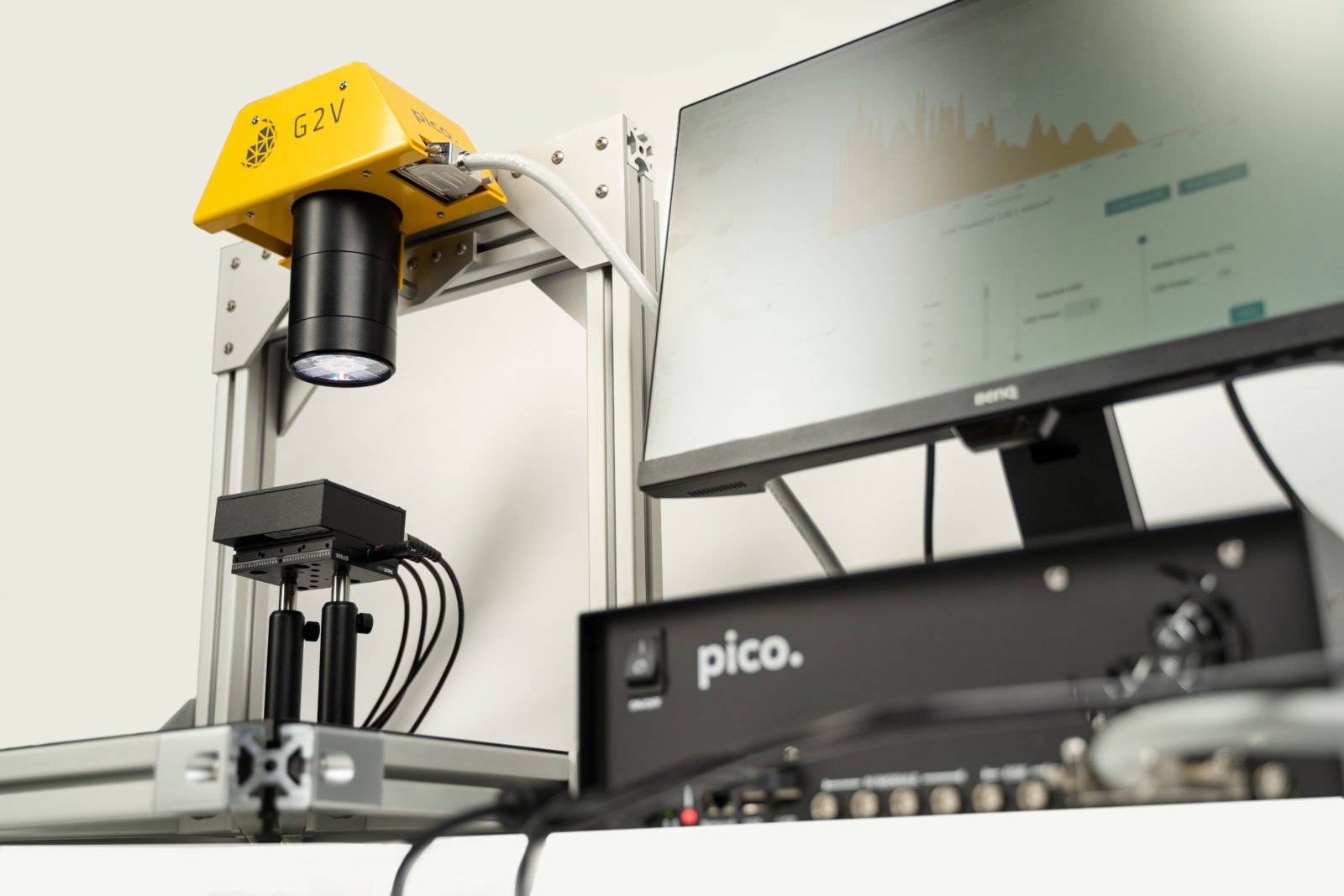
Pico™ Solar Simulator for Academia
Your research require precision as well as accuracy, without needing to completely reformat your lab space. The Pico small-area solar simulator provides exceptional solar simulation in a small form factor to accommodate any academic setting.
- Small form factor to integrate into glove boxes, fume hoods or restricted lab spaces
- Up to 32 tunable LED channels to provide research flexibility
- IV and EQE modules to aid in automated quantification of solar cells
- Python API and network connectivity for automating and synchronizing with other equipment
Make light a lab condition you completely control.
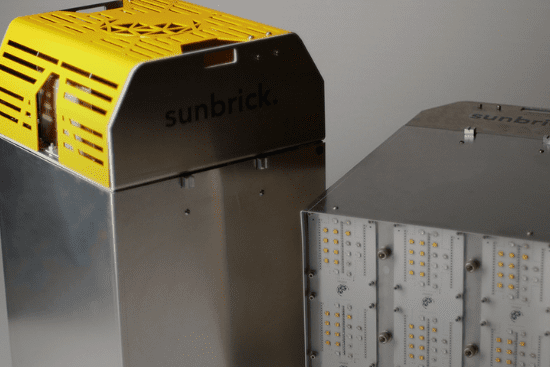
Sunbrick™ Solar Simulator for Academia
Your samples are big, and you're vetting physical phenomena that require large, uniform light that can still be flexible according to changing research needs. The Sunbrick large-area solar simulator has a tileable design that can scale to arbitrary sizes, all with high tunability to meet your present and future research requirements.
- Up to 36 tunable LED channels to provide research flexibility
- Tileable design allows the Sunbrick to be the solution platform for your scaling research requirements
- Python API and LabView DLL for automation, scripting, and integration with other equipment
- Large Class A uniform area of 20 cm by 20 cm (and larger)
Case Study
Researchers working at multiple testing sites wanted to evaluate the performance of light-absorbing coatings in order to optimize the relationship between film thickness and materials cost. They needed to run their tests in controlled lab conditions that would allow them to quickly characterize their films but also needed to measure the response of their materials to outdoor day-night sunlight variations. Additionally, they needed to compare their results between their different testing sites to ensure adequate quality control.
Innovation: The Pico small-area solar simulator by G2V Optics can reproduce natural sunlight with high accuracy and its One-Click-Sun (beta) feature can simulate solar irradiance at different locations on earth any time of the year.
Outcome: The researchers installed the Pico into their assembly and characterization line to serve as a lab-sized sun capable of providing the radiation necessary to optimize their film deposition process. One-Click-Sun enabled the collection of data to make predictions on how their coatings would behave at different latitudes. Thanks to the Pico’s class AAA performance, film manufacturing reproducibility was verified at the different testing sites.
Featured Innovation
Engineered Sunlight™, Lifelike Results
The Pico Small-Area Simulator
Whether you are exploring basic scientific questions or measuring the performance of a prototype under real-life conditions, you need an instrument that will reproduce sunlight in all its fidelity and that will seamlessly integrate into your instrumental ecosystem.
The G2V Pico small-area solar simulator is the instrument used in state-of-the-art research to produce on-demand engineered sunlight. Its LED technology gives you the precision throughout your experiment without the need for long warm-up times, spectral mismatch or temporal variance of traditional bulb-based simulators.
Some of the features most useful to our customers include:
- User-tunable output controls
- Spectral presets for different irradiance conditions like AM0, AM1.5G, etc.
- IV, EQE modules for solar cell testing
- One-Click Sun to simulate the solar irradiance anywhere in the world at any time of the day
- Seamless integration with other lab instruments via python API and network connectivity
Your innovations need to take flight. Let the Pico light the way.
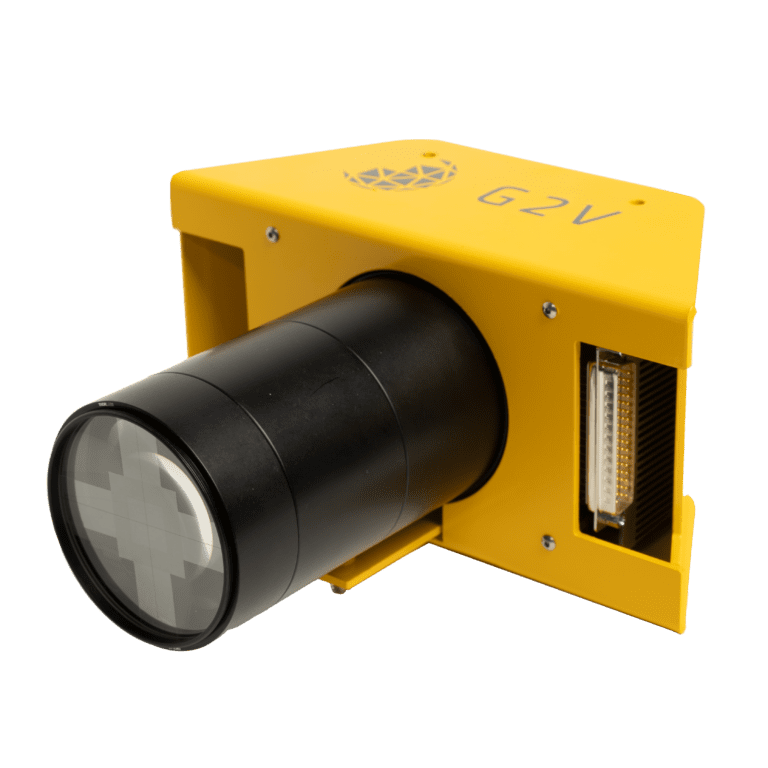
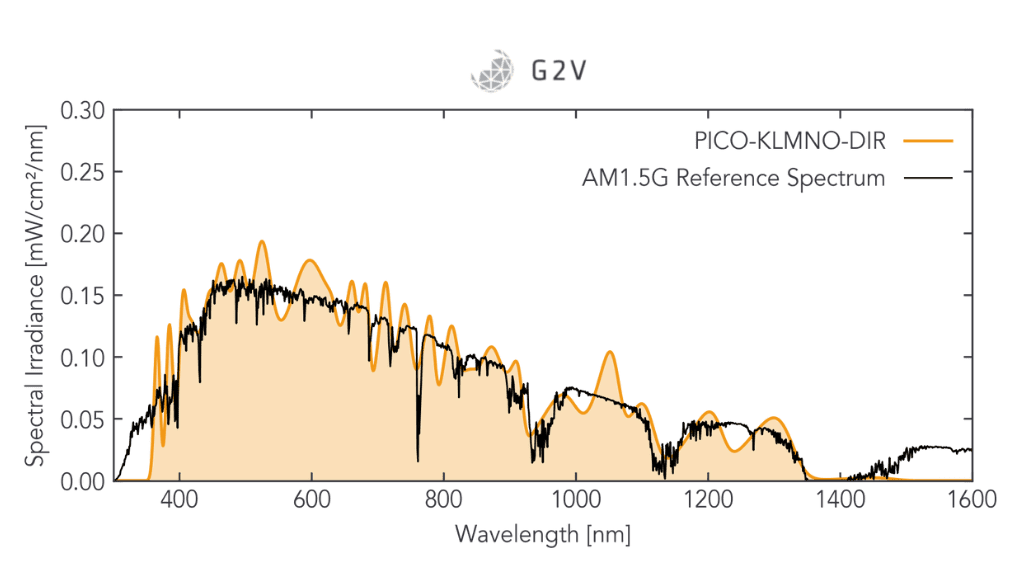
As you consider buying a solar simulator, check out our guide on what to look for.
Everything you wanted to know but were afraid to ask – What’s a fair cost? How long will my simulator last? Are all simulators alike?
Any laboratory doing research or product development must evaluate the costs of buying instruments and maintaining them. Scientific research is complex and buying a solar simulator shouldn’t have to be.
Our guide will walk you through the basic considerations in terms of cost-to-benefit ratio, performance metrics for choosing between different simulators in the market, explain the factors in a purchase decision like initial cost and upkeep expenses, and discuss why choosing the right simulator is key to enable scientific discovery.
Article highlights:
- The total cost of owning a solar simulator
- Hidden costs (time and money)
- Choosing between different simulators in the market
- A template for your own financial calculations

G2V's FAQs
One of the key advantages of LED solar simulators is their very small warm up times. It takes LEDs less than a few microseconds to start emission light after they have been turned on. In the practice, you can expect class A steady-state output from the simulator around 5 minutes after it has been turned on.
The G2V simulators have been designed to meet class A+ temporal stability requirements. You should not see any meaningful variation in output even when testing a sample continuously over the course of several days.
A solar simulator is not the same as a light source. A solar simulator does contain a light source but it’s so much more than that! Solar simulators are specialized instruments that also contain a collection of optical pieces and electronic components carefully calibrated to match the sun’s spectral composition and energy flux with high accuracy.
LEDs, even white ones, only emit narrowband radiation. Therefore, many LEDs with emission in multiple wavelengths are necessary to achieve an output true to natural sunlight. Additionally, LED output must be individually and globally adjusted for irradiance of 1000 W/m² which is the accepted standard for terrestrial earth. Solar simulators also should meet industry standards such as IEC60904-9 which outlines spatial uniformity, temporal stability, spectral match, spectral coverage, and spectral deviation benchmarks.
The takeaway is that solar simulators are a worthwhile investment due to the specialized components and considerable work that goes into calibrating them to produce engineered sunlight. Don’t forget to check out our pricing guide for more details.
The Sunbrick and the directed Pico models produce light with an angular full-width at half-maximum (FWHM) of approximately 20 to 30 degrees. The Lambertian Pico produces light with a Lambertian angular distribution. If you require a slightly different angular distribution for your application, get in touch and we can discuss possible solutions.
As with any solar simulator, an increase in substrate temperature is expected as a function of light exposure time. A benefit of LED simulators is that they do not emit excess IR radiation so unwanted heating is reduced; however, substrate heating does occur. In some cases this can be desirable and in others external cooling may be necessary to maintain controlled temperature conditions. Contact us to discuss your experimental needs or if you’re interested in high-flux or solar concentration experiments!
Our simulators have built-in hardware protection mechanisms to prevent overheating of the instruments. So you can run your measurements as the experiment requires.
Yes! Both of our solar simulator products have software integration options available so that you can program the scheduling and testing routines best suited for your unique research. See details in the product highlight sections above.
Our simulators have been designed to accurately reproduce the light output of the sun. Please avoid staring directly at the LEDs as UV light could damage your eyes. It is recommended to wear protective glasses when working with high reflectance surfaces.
Knowledge Base
Our Expertise. Your Home Base.
We make sure that our customers have access to resources that help them understand more not only about the products we offer, but related applications and standards. Visit the knowledge base to learn more about LED illumination, Class AAA standards, Photovoltaics and much more. Knowledge is solar power.
IEC 60904-9:2020 Standard for Solar Simulators
In our modern era, nearly every industry has standards that set baselines for ensuring its associated products are safe and suitable to perform intended tasks. Solar simulation – reproducing sunlight – is no different, having standards that specify the requirements for solar simulators, and...
Solar Simulation
Talk to An Expert
